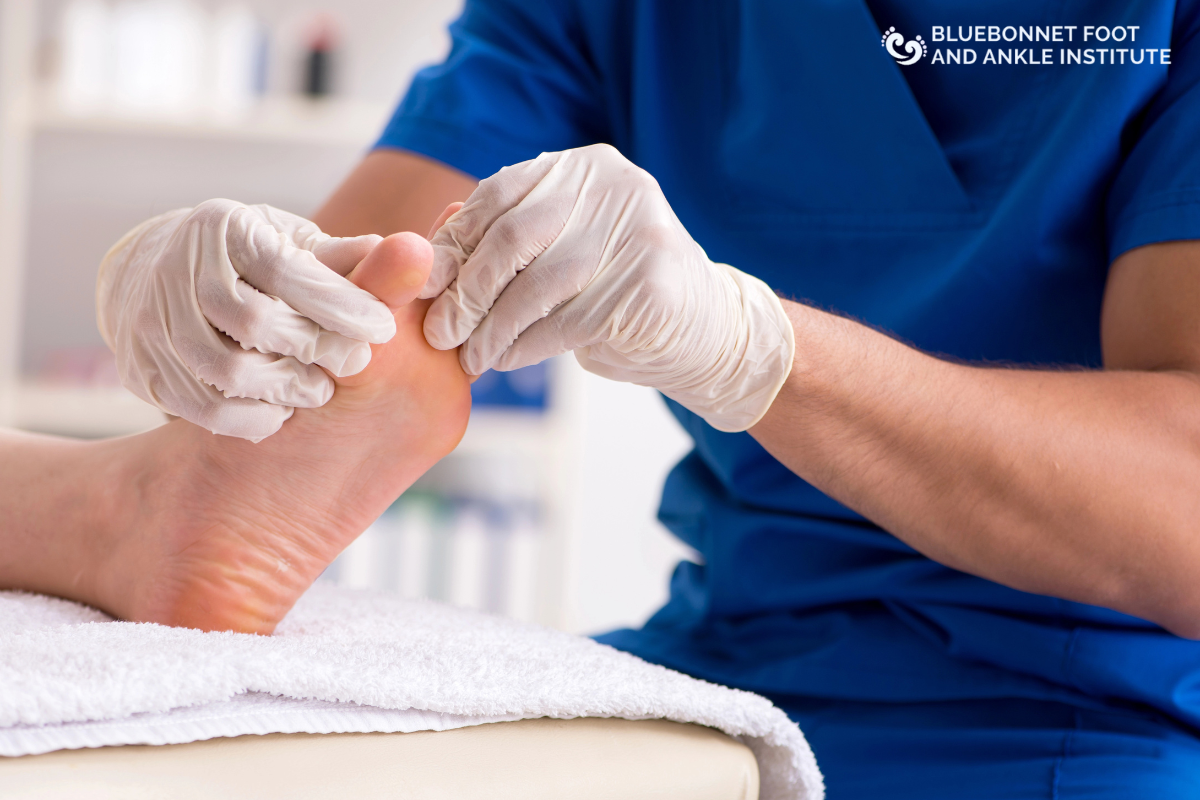
Living with diabetes means paying close attention to your overall health, and one of the most important areas to monitor is your feet. Since diabetes can affect blood flow and nerves, people with diabetes are at a higher risk of developing foot problems and serious complications if early treatment is not pursued.
In this article, we’ll discuss diabetes-related foot conditions, their causes and symptoms, when to see a healthcare provider, treatment options, and essential diabetic foot care tips.
If you’re experiencing any concerns with your feet, our specialists at Bluebonnet Foot and Ankle Institute in Austin, Texas, are here to help you protect your health. Contact us today to schedule a consultation.
Diabetes-related foot complications occur when high blood sugar damages blood vessels and nerves in the feet. This damage can cause reduced blood flow and nerve damage, known as peripheral neuropathy. As a result, even minor foot injuries may lead to serious complications if not treated promptly.
Some of the most common diabetic foot problems include:
Diabetes-related foot conditions develop due to a combination of nerve damage, reduced blood flow, and increased susceptibility to infection. Over time, high blood sugar levels damage blood vessels, which restrict circulation and impair the body’s ability to heal.
Symptoms to watch for include:
Even mild symptoms can progress quickly, which is why daily monitoring is key for people with diabetes.
The American Podiatric Medical Association recommends that people with diabetes check their feet daily and schedule regular visits with a foot doctor. You should seek medical care immediately if you notice:
Early treatment can help prevent serious complications, including infections that may require surgery.
Treatment for diabetic foot problems depends on the severity of the condition:
The goal of treatment is to promote healing, restore function, and prevent further complications.
Preventing foot complications starts with daily care and healthy lifestyle habits. Here are key steps to help keep your feet healthy:
At Bluebonnet Foot and Ankle Institute in Austin, Texas, our experienced foot and ankle surgeons provide comprehensive care for people with diabetes. Whether you’re managing early signs of foot complications or need treatment for more advanced concerns, we’re here to help you stay active and healthy.
Don’t wait until foot pain or complications interfere with your life. Schedule an appointment with our office today to protect your feet and your health.